#conservation
Text
Happy Earth Day!

We share this beautiful planet with over two million other species, from wasps the size of a grain of dust to whales larger than an office building. Yet, many of these species now face extinction due to the ways in which we humans have modified the planet to suit our needs. According to the International Union for the Conservation of Nature (IUCN), 13% of birds, 21% of reptiles, 27% of mammals, 37% of sharks, and 41% of amphibians are currently endangered, and some estimates suggest that 28% of all species on Earth are at risk of extinction in the near future. Imagine you woke up tomorrow and more than a quarter of every plant, animal, and fungus, from the elephants at the zoo to the earthworms beneath the soil, simply vanished, never to be seen ever again. If we choose to continue treating our planet so poorly, this will become a reality.
Here at Consider Nature, we believe the best way to protect our planet is to arm ourselves with knowledge! Over the years, we have written many articles on some of Earth’s coolest, weirdest, and most-endangered species, in the hope of inspiring readers to step up to the plate and protect biodiversity. I hope you will spend a few minutes of your Earth Day today reading about some of the species we believe are worth saving.

Zacaton grasslands in central Mexico, home to the Zacatuche, or volcano rabbit. Image credit: Jurgen Hoth
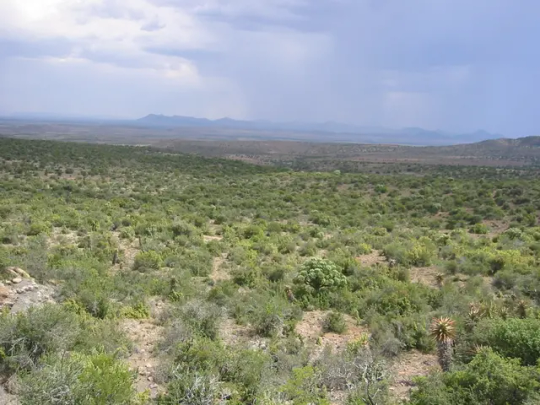
The Succulent Karoo, one of the most biodiverse ecosystems on Earth and home to the Karoo Padloper. Image credit: Tjeerd Wiersma under CC BY-SA 2.0.
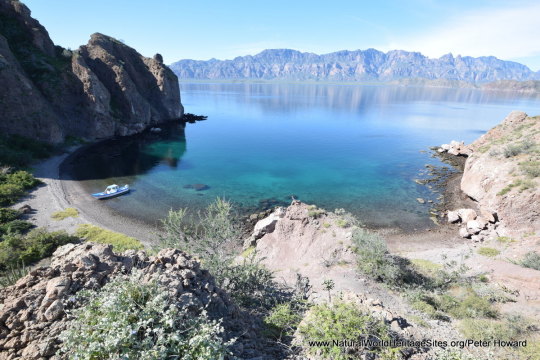
The Gulf of California, home of the critically endangered Vaquita. Image credit: Natural World Heritage Sites.
648 notes
·
View notes
Text
Insects are critical to the survival of most other animals, including humans. But many insect species, from beetles to dragonflies to butterflies, are declining in abundance due in part to human activity. For Earth Month, Insectarium host Dr. Jessica L Ware gives tips on small things each of us can do to make a lasting impact and help insects thrive for years to come.
Learn more about insects with Museum Curator Jessica Ware in Insectarium on PBS Terra's YouTube channel.
#science#amnh#museum#natural history#nature#animals#insects#bugs#entomology#conservation#biodiversity#earth day#earth month
404 notes
·
View notes
Text

"Happy Earth Day!
Today, we celebrate our incredible planet and all its wonders. From the towering mountains to the deep oceans, Earth is our home and our sanctuary.
As we face the challenges of climate change, pollution, and biodiversity loss, it's more important than ever to come together and take action. We must reduce our carbon footprint, conserve our natural resources, and protect our precious wildlife.
Let's make a pledge to live more sustainably, to reduce our waste, and to support renewable energy. Let's plant trees, support eco-friendly policies, and educate ourselves and others about the importance of environmental conservation.
Together, we can make a difference and ensure a healthy, thriving planet for future generations.
#EarthDay Sustainability ClimateAction RenewableEnergy Conservation WildlifeProtection SustainableLiving GoGreen“#earth day#sustainability#desiblr#desi aesthetic#desi academia#save environment#earth#nature#save water#wildlife#go green#save planet#say no to plastic#conservation#indians#mother nature
55 notes
·
View notes
Text
(lot of big frog wins)
For the first time in five years, northern corroboree frogs have been spotted in Namadgi National Park by ACT government ecologists.
The species is listed as critically endangered and the government has been attempting to restore their population in the park for more than a decade.
Ecologists have been releasing frogs and eggs into the park as part of a breeding program, but they had not been spotted in the wild since 2019.
This year, 16 male frogs were identified at the Ginini Flats Wetlands site and a further 21 frogs were counted at a lower elevation site in the park. "Having not seen these frogs in the wild since 2019, we were beginning to think all hope was lost, and that the species was close to extinction," Environment Minister Rebecca Vassarotti said.
She told ABC Radio Canberra the frogs were under pressure due to many issues including climate change, habitat loss and the invasive chytrid fungus.
That deadly fungus affects the frogs' skin and stops them from being able to take in water and important salts.
Ms Vassarotti said ecologists had been experimenting with the breeding program and releasing frogs in different areas to see if they could make a difference.
"We've been ... releasing eggs in some other areas in Namadgi, where they hadn't previously been seen," she explained.
"These were at slightly lower elevations. And the reason we were doing that is that they were elevations where there wasn't such an impact of this awful fungus."Ms Vassarotti said this was an "exciting" development but acknowledged there was more work to be done through the breeding program.
"Australia is the extinction capital of the world," Ms Vassarotti said in a statement.
"Way too often, climate change and human impact on the environment has resulted in us losing unique species permanently as they become extinct.
"I've been heartbroken to have to continue to list species as close to extinction.
"The identification of new northern corroboree frogs across a range of sites restores my confidence that we can save this incredible frog that is so unique to our region."
#good news#frogs#environmentalism#science#environment#nature#animals#australia#endangered species#conservation#climate change#climate crisis#parks
53 notes
·
View notes
Text


scissor-tailed flycatcher (Tyrannus forficatus)
#scissor tailed flycatcher#conservation#nature#biology#wildlife#wildlife photography#bird photography#birds#birding#birdwatching#birdblr
44 notes
·
View notes
Text

Happy Earth Day!
#my art#red panda#mammals#sciart#digital art#artblr#artists of tumblr#wildlife art#redpanda#animal#animal artist#digital painting#natural history art#nature art#nature#conservation#environment#krita
53 notes
·
View notes
Note
Could you do the desert long eared bat if possible? 🥺 My favorite little weirdos
I'd be happy to!
Today's Bat: Desert Long-Eared Bat

Environmental Impact: The Desert Long-Eared Bat favors the arid regions of northern Africa and the Arabian Peninsula, where they fly low to the ground and echolocate for insects. Their main food source is thought to be arachnids (more on this later). Because of the lack of vegetation in their dessert habitat, they often roost on rock faces or in human-made buildings. Their conservation status is currently unknown, but they're incredibly well-adapted to their habitats.
🦇🦇🦇/5
Beauty: The white fur on this species is quite striking, especially when paired with the pinkish coloration of their skin. I imagine them in their female-only roosts, discussing which brands of purple shampoo they like best. Additionally: holy moly, those ears are satellite dishes; truly a sign of bat beauty.
🦇🦇🦇🦇🦇/5
Power: Unpinning the arachnid point from earlier: Desert Long-Eared Bats have been observed shaking off the stings of scorpions as they hunt, which leads researchers to believe that the bats are immune to the scorpions' venom. This, plus their ability to fall easily into and out of torpor with desert temperature fluctuations, make them a truly formidable and resilient bat.
🦇🦇🦇🦇🦇/5
Overall: I'm really a fan of these cuties! Even if they weren't cute as a button, I'd admire them for their crusade against the scariest kind of bug I can think of.
🦇🦇🦇🦇🦇/5
(Today's sources: Animalia, EuroBats, GBIF)
20 notes
·
View notes
Text

LETTERS FROM AN AMERICAN
April 21, 2024
HEATHER COX RICHARDSON
APR 22, 2024
During her confirmation hearings in 2021, Interior Department secretary Deb Haaland promised “to responsibly manage our natural resources to protect them for future generations—so that we can continue to work, live, hunt, fish, and pray among them.” Noting her Indigenous heritage, Haaland tweeted, “A voice like mine has never been a Cabinet secretary or at the head of the Department of Interior…. I’ll be fierce for all of us, our planet, and all of our protected land.”
Her approach was a shift from the practice the Interior Department had established at the beginning of the twentieth century when it began to prioritize mineral, oil, and gas development, as well as livestock grazing, on U.S. public lands. But the devastating effects of climate change have brought those old priorities into question.
Republicans, especially those from states like Wyoming, which collects more than a billion dollars a year in royalties and taxes from the oil, gas, and coal produced on federal lands in the state, opposed Haaland’s focus on responsible management of natural resources for the future and warned that the Biden administration is “taking a sledgehammer to Western states’ economies.”
On Thursday, April 18, the Interior Department finalized a new rule for a balanced management of America’s public lands. Put together after a public hearing period that saw more than 200,000 comments from states, individuals, Tribal and local governments, industry groups, and advocacy organizations, the new rule prioritizes the health of the lands and waters the Interior Department’s Bureau of Land Management oversees. Those consist of about 245 million acres, primarily in 12 western states.
The new rule calls for protection of the land, restoration of the places that have been harmed in the past, and a promise to make informed decisions about future use based on “science, data, and Indigenous knowledge.” It “recognizes conservation as an essential component of public lands management, on equal footing with other multiple uses of these lands.” The Bureau of Land Management will now auction off leases not only for drilling, but also for conservation and restoration.
Western state leaders oppose the Biden administration’s efforts to change the Interior Department’s past practices, calling them “colonial forces of national environmental groups who are pushing an agenda” onto states like Wyoming.
The timing of the Interior Department’s new rule can’t help but call attention to Earth Day, celebrated tomorrow, on April 22. Earth Day is no novel proposition. Americans celebrated it for the first time in 1970. Nor was it a partisan idea in that year: Republican president Richard M. Nixon established it as Americans recognized a crisis that transcended partisanship and came together to fix it.
The spark for the first Earth Day was the 1962 publication of marine biologist Rachel Carson’s Silent Spring, which showed the devastating effects of people on nature by documenting the effect of modern pesticides on the natural world. Her exposé of how the popular pesticide DDT was poisoning the food chain in American waters illuminated the dangerous overuse of chemicals and their effect on living organisms, and it caught readers’ attention. Carson’s book sold more than half a million copies in 24 countries.
Democratic president John F. Kennedy asked the President’s Science Advisory Committee to look into Carson’s argument, and the committee vindicated her. Before she died of breast cancer in 1964, Carson noted: "Man's attitude toward nature is today critically important simply because we have now acquired a fateful power to alter and destroy nature. But man is a part of nature, and his war against nature is inevitably a war against himself? [We are] challenged as mankind has never been challenged before to prove our maturity and our mastery, not of nature, but of ourselves."
As scientists organized the Environmental Defense Fund, Americans began to pay closer attention to human effects on the environment, especially after three crucial events. First, on December 24, 1968, astronaut William Anders took a color photograph of the Earth rising over the horizon of the moon from outer space during the Apollo 8 mission, powerfully illustrating the beauty and isolation of the globe on which we all live.
Then, over 10 days in January and February 1969, a massive oil spill off the coast of Santa Barbara, California, poured between 80,000 and 100,000 barrels of oil into the Pacific, fouling 35 miles of California beaches and killing seabirds, dolphins, sea lions, and elephant seals. Public outrage ran so high that President Nixon went to Santa Barbara in March to see the cleanup efforts, telling the American public that “the Santa Barbara incident has frankly touched the conscience of the American people.”
And then, in June 1969, the chemical contaminants that had been dumped into Cleveland’s Cuyahoga River caught fire. A dumping ground for local heavy industry, the river had actually burned more than ten times in the previous century, but with increased focus on environmental damage, this time the burning river garnered national attention.
In February 1970, President Nixon sent to Congress a special message “on environmental quality.” “[W]e…have too casually and too long abused our natural environment,” he wrote. “The time has come when we can wait no longer to repair the damage already done, and to establish new criteria to guide us in the future.”
“The tasks that need doing require money, resolve and ingenuity,” Nixon said, “and they are too big to be done by government alone. They call for fundamentally new philosophies of land, air and water use, for stricter regulation, for expanded government action, for greater citizen involvement, and for new programs to ensure that government, industry and individuals all are called on to do their share of the job and to pay their share of the cost.”
Meanwhile, Gaylord Nelson, a Democratic senator from Wisconsin, visited the Santa Barbara oil spill and hoped to turn the same sort of enthusiasm people were bringing to protests against the Vietnam War toward efforts to protect the environment. He announced a teach-in on college campuses, which soon grew into a wider movement across the country. Their “Earth Day,” held on April 22, 1970, brought more than 20 million Americans—10% of the total population of the country at the time—to call for the nation to address the damage caused by 150 years of unregulated industrial development. The movement included members of all political parties, rich Americans and their poorer neighbors, people who lived in the city and those in the country, labor leaders and their employers. It is still one of the largest protests in American history.
In July 1970, at the advice of a council convened to figure out how to consolidate government programs to combat pollution, Nixon proposed to Congress a new agency, the Environmental Protection Agency, which Congress created that December.
In honor of Earth Day 2024, Democratic president Joe Biden has called for carrying on the legacy of our predecessors “by building a greener, more sustainable planet and, with it, a healthier, more prosperous nation.”
In a statement, Biden noted that no one can any longer deny the impacts and staggering costs of climate change as the nation confronts historic floods, droughts, and hurricanes.
“Deforestation, nature loss, toxic chemicals, and plastic pollution also continue to threaten our air, lands, and waters, endangering our health, other species, and ecosystems,” he said. He noted the administration’s efforts to build a clean energy economy, providing well-paid union jobs as workers install solar panels, service wind turbines, cap old oil wells, manufacture electric vehicles, and so on, while also curbing air pollution from power plants and lead poisoning from old pipes, the burden of which historically has fallen on marginalized communities.
Biden noted that he brought the U.S. back into the Paris Climate Accord Trump pulled out of, is on track to conserve more lands and waters than any president before him, and has worked with the international community to slash methane emissions and restore lost forests.
And yet there is much more to be done, he said. He encouraged “all Americans to reflect on the need to protect our precious planet; to heed the call to combat our climate and biodiversity crises while growing the economy; and to keep working for a healthier, safer, more equitable future for all.”
Happy Earth Day 2024.
LETTERS FROM AN AMERICAN
HEATHER COX RICHARDSON
#Heather Cox Richardson#earth day#history#Letters From An American#Conservation#natural resources#Interior Department#Silent Spring#Rachel Carson
25 notes
·
View notes
Text
Im fucking sobbing looking at the new black footed cat at Utah's Hogle zoo
Shes just a fucking baby

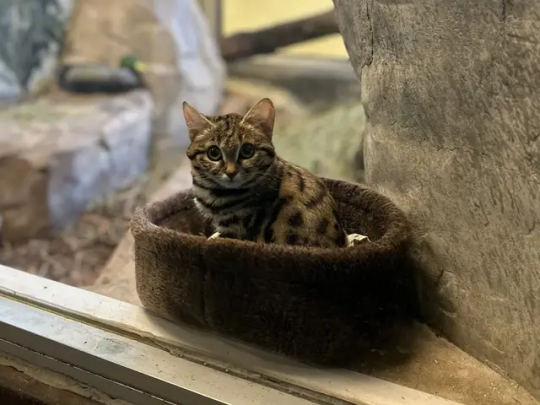
Baby with a 60% successful kill rate
#wrenfea.article#theres a video in the article#her name is gaia and shes 8 months#shes part of the AZA breeding program#i now have a reason to visit utah#leetle baby gorl#black footed cat#conservation news#conservation#zoos#animals#also the highest successful kill percentage for big cats is like. 25%#so 60% is fucking crazy
50K notes
·
View notes
Text

WELCOME BACK YELLOW-CRESTED HELMETSHRIKE!!!
25K notes
·
View notes
Text
"In one of Africa’s last great wildernesses, a remarkable thing has happened—the scimitar-horned oryx, once declared extinct in the wild, is now classified only as endangered.
It’s the first time the International Union for the Conservation of Nature (IUCN), the world’s largest conservation organization, has ever moved a species on its Red List from ‘Extinct in the Wild’ to ‘Endangered.’
The recovery was down to the conservation work of zoos around the world, but also from game breeders in the Texas hill country, who kept the oryx alive while the governments of Abu Dhabi and Chad worked together on a reintroduction program.
Chad... ranks second-lowest on the UN Development Index. Nevertheless, it is within this North African country that can be found the Ouadi Rimé-Ouadi Achim Faunal Reserve, a piece of protected desert and savannah the size of Scotland—around 30,000 square miles, or 10 times the size of Yellowstone.
At a workshop in Chad’s capital of N’Djamena, in 2012, Environment Abu Dhabi, the government of Chad, the Sahara Conservation Fund, and the Zoological Society of London, all secured the support of local landowners and nomadic herders for the reintroduction of the scimitar-horned oryx to the reserve.
Environment Abu Dhabi started the project, assembling captive animals from zoos and private collections the world over to ensure genetic diversity. In March 2016, the first 21 animals from this “world herd” were released over time into a fenced-off part of the reserve where they could acclimatize. Ranging over 30 miles, one female gave birth—the first oryx born into its once-native habitat in over three decades.
In late January 2017, 14 more animals were flown to the reserve in Chad from Abu Dhabi.
In 2022, the rewilded species was officially assessed by the IUCN’s Red List, and determined them to be just ‘Endangered,’ and not ‘Critically Endangered,’ with a population of between 140 and 160 individuals that was increasing, not decreasing.
It’s a tremendous achievement of international scientific and governmental collaboration and a sign that zoological efforts to breed endangered and even extinct animals in captivity can truly work if suitable habitat remains for them to return to."
-via Good News Network, December 13, 2023
#chad#abu dhabi#north africa#rewilding#endangered species#conservation#zoology#conservation biology#oryx#good news#hope#texas#big game#animals#endangered#environmentalism#environmental science#zoo#zoos#zoo animals
24K notes
·
View notes
Text
Golf Courses ARE Being Converted
The Solarpunk "fantasy" that so many of us tout as a dream vision, converting golf courses into ecological wonderlands, is being implemented across the USA according to this NYT article!
The article covers courses in Michigan, Pennsylvania, California, Colorado, and New York that are being bought and turned into habitat and hiking trails.

The article goes more into detail about how sand traps are being turned into sand boxes for kids, endangered local species are being planted, rocks for owl habitat are being installed, and that as these courses become wilder, they are creating more areas for biodiversity to thrive.
Most of the courses in transition are being bought by Local Land Trusts. Apparently the supply of golf courses in the USA is way over the demand, and many have been shut down since the early 2000s. While many are bought up and paved over, land Trusts have been able to buy several and turn them into what the communities want: public areas for people and wildlife. It does make a point to say that not every hold course location lends itself well to habitat for animals (but that doesn't mean it wouldn't make great housing!)
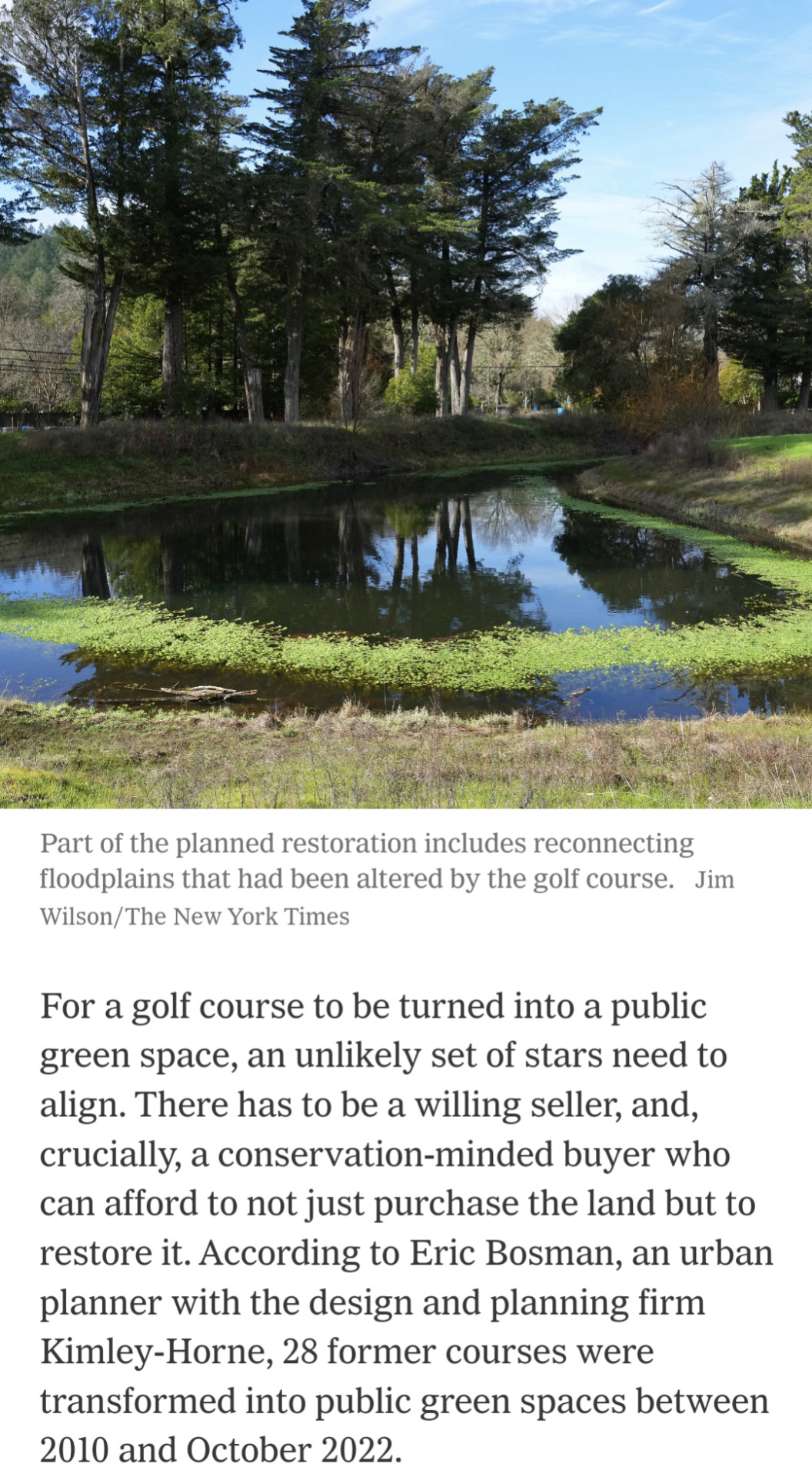
So lets be excited by the fact that people we don't even know about are working on the solutions we love to see! Turning a private space that needs thousands of gallons of water and fertilizer into an ecologically oriented public space is the future I want to see! I can say when I used to work in water conservation, we were getting a lot of clients that were golf courses that were interested in cutting their resource input, and they ended up planting a lot of natives! So even the golf courses that still operate could be making an effort.
So what I'd encourage you to do is see if there's any land or community trusts in your area, and see if you can get involved! Maybe even look into how to start one in your community! Through land trusts it's not always golf course conversions, but community gardens, solar fields, disaster adaptation, or low cost housing! (Here's a link to the first locator I found, but that doesn't mean if something isn't on here it doesn't exist in your area, do some digging!)
#solarpunk#sustainability#climate change#gardening#activism#hope#climate justice#news#new york times#golf courses#habitat#conservation
14K notes
·
View notes
Photo

I’ve seen a few ~aesthetic~ photos of rock stacks in rivers recently and this is just a reminder that you are destroying habitat when you move rocks around in rivers and streams.
In addition to dragonfly nymphs, rocky river beds are home to lots of other larval invertebrates like damselflies, mayflies, water beetles, caddisflies, stoneflies, and a bunch of dipterans. Not to mention lots of fish and amphibians!
Plus large scale rock stacking can change the flow of a stream and lead to increased erosion.
Anyway dragonfly for admiration:
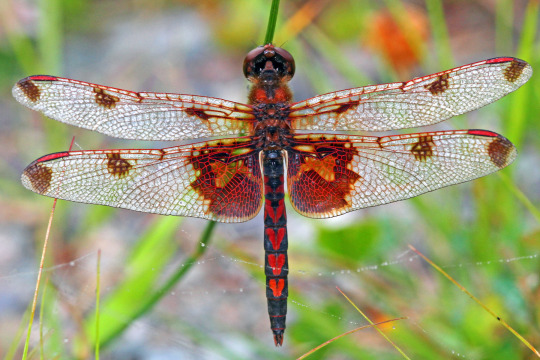
Calico pennant by nbdragonflyguy
39K notes
·
View notes
Text
If you aren't following the news here in the Pacific Northwest, this is a very, very big deal. Our native salmon numbers have been plummeting over the past century and change. First it was due to overfishing by commercial canneries, then the dams went in and slowed the rivers down and blocked the salmons' migratory paths. More recently climate change is warming the water even more than the slower river flows have, and salmon can easily die of overheating in temperatures we would consider comfortable.
Removing the dams will allow the Klamath River and its tributaries to return to their natural states, making them more hospitable to salmon and other native wildlife (the reservoirs created by the dams were full of non-native fish stocked there over the years.) Not only will this help the salmon thrive, but it makes the entire ecosystem in the region more resilient. The nutrients that salmon bring back from their years in the ocean, stored within their flesh and bones, works its way through the surrounding forest and can be traced in plants several miles from the river.
This is also a victory for the Yurok, Karuk, and other indigenous people who have relied on the Klamath for many generations. The salmon aren't just a crucial source of food, but also deeply ingrained in indigenous cultures. It's a small step toward righting one of the many wrongs that indigenous people in the Americas have suffered for centuries.
#salmon#dam removal#fish#animals#wildlife#dams#Klamath River#Klamath dams#restoration ecology#indigenous rights#Yurok Tribe#Karuk Tribe#nature#ecology#environment#conservation#PNW#Pacific Northwest
12K notes
·
View notes
Text
Fungus Devastating Frogs on Nearly Every Continent May Have an Achilles Heel–and Scientists Think it Could Save the Amphibians https://www.goodnewsnetwork.org/fungus-devastating-frogs-on-nearly-every-continent-may-have-an-achilles-heel-and-scientists-think-it-could-save-the-amphibians/
“A pandemic among frogs has been going on worldwide for years—the culprit: a fungal infection that has affected amphibians on nearly every continent.
But now, the discovery of a virus that has evolved to replicate inside this fungus could be the key to saving nearly 500 species of frogs that have experienced declines due to this amphibian pandemic.
Viruses are the smallest organisms we know about, and researchers at Univ. of California, Riverside weren’t out looking for one when they found it embedded in the fungus DNA.
The fungus Batrachochytrium dendrobatidis or Bd, wasn’t prevalent until the late 1990s, when suddenly frogs just started dropping dead all over the world.
“We wanted to see how different strains of fungus differ in places like Africa, Brazil, and the U.S., just like people study different strains of COVID-19,” said UCR microbiology professor Jason Stajich.
To do this, Stajich and colleagues used DNA sequencing technology. As they examined the data, they noticed some sequences that did not match the DNA of the fungus.
“We realized these extra sequences, when put together, had the hallmarks of a viral genome,” Stajich said.
The team found that the virus—a single-strand DNA virus which literally is the smallest known organism—is integrated into the nuclear genome in some strains of Bd.
Attempts to cure virus-positive isolates were unsuccessful; however, differences between naturally virus-positive and virus-negative Bd isolates suggested that this virus decreases the growth of its host in vitro, the authors write.
They speculate that if the virus could be replicated and then engineered to further reduce this growth, biologists may have a method of saving amphibians like the harlequin frogs of Ecuador which have been heavily affected by Bd.
The scientists say that a lot more research is needed before such a cure might be manufactured, including for questions like how this virus infects its host.””
#microbes#microbiology#frogs#animal protection#animal conservation#animas#amphibia#amphibians#good news#environmentalism#science#environment#nature#animals#conservation
18 notes
·
View notes
Text

BREAKING: New Jaguar Just Dropped!
A Center for Biological Diversity analysis of a trail camera detection by wildlife enthusiast Jason Miller confirms we have a new jaguar in Arizona, making it the 8th jaguar documented in the U.S. Southwest in the past 3 decades.
The rosette pattern on each jaguar is unique, like a human fingerprint, and it enables identification of specific animals. The pattern shows this jaguar is not Sombra or El Jefe, two jaguars who have roamed Arizona in recent years.
Jaguars once lived throughout the American Southwest, with historical records on the South Rim of the Grand Canyon, the mountains of Southern California and as far east as Louisiana. But they virtually disappeared from this part of their range over the past 150 years, primarily due to habitat loss and historic government predator control programs intended to protect the livestock industry.
Read more: https://biodiv.us/3RORtQp
8K notes
·
View notes